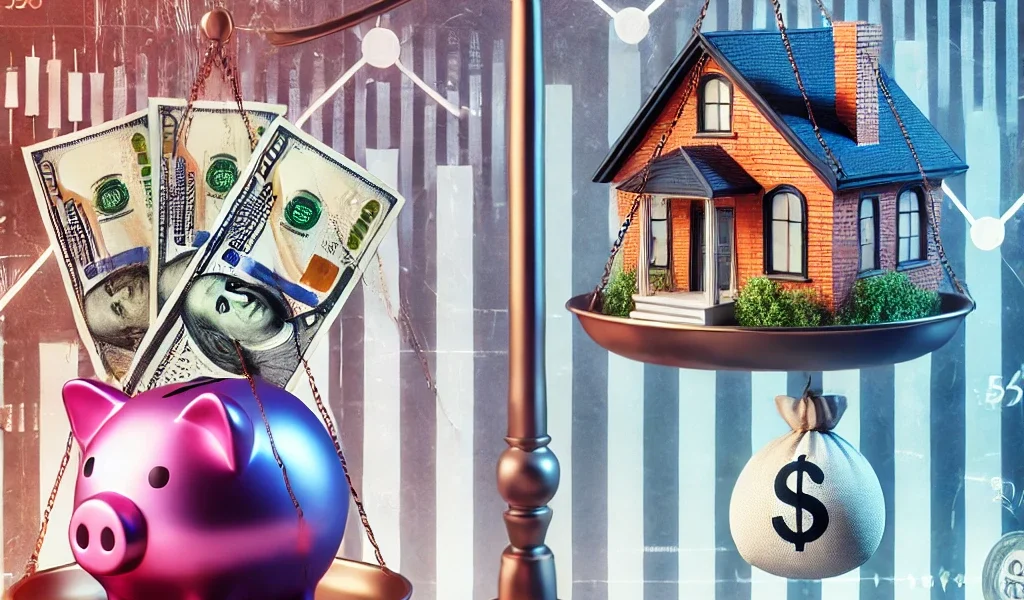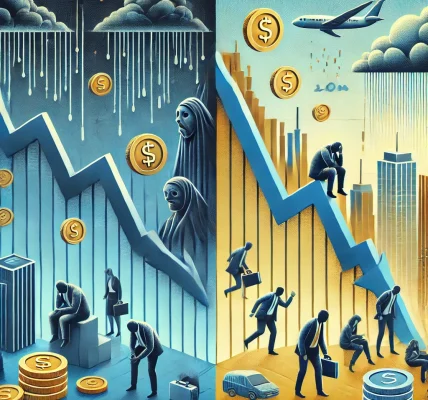Introduction
Interest rates are one of the most significant economic factors that influence consumers, businesses, and investors. They determine how much it costs to borrow money, how much savings can grow, and how investments perform in financial markets.
Central banks, such as the Federal Reserve in the U.S. or the Reserve Bank of India, adjust interest rates to control inflation, stabilize economic growth, and influence financial markets. But how do these changes impact you? In this article, we explore the effects of rising and falling interest rates on loans, savings, and investments.
1. The Basics of Interest Rates
Before diving into the effects, let’s break down interest rates into two key types:
a) Nominal vs. Real Interest Rates
- Nominal interest rate: The stated rate on loans or deposits, not adjusted for inflation.
- Real interest rate: The nominal rate minus inflation, showing the true purchasing power impact.
b) Fixed vs. Variable Interest Rates
- Fixed rates remain constant over the loan or deposit period.
- Variable rates fluctuate based on benchmark rates like LIBOR or the prime rate.
Key takeaway: When central banks raise or lower interest rates, it affects these rates across financial products.
2. How Interest Rates Affect Loans
a) Impact on Mortgages and Home Loans
- When rates increase: Mortgage rates rise, making monthly payments higher and reducing affordability for homebuyers.
- When rates decrease: Home loans become cheaper, encouraging more people to buy property.
Example: If mortgage rates increase from 3% to 5%, a $300,000 home loan could cost several hundred dollars more per month.
b) Auto Loans and Consumer Credit
- Higher rates: Car loans become more expensive, leading to lower car sales.
- Lower rates: Financing becomes easier, increasing vehicle purchases.
c) Personal Loans and Credit Cards
- Credit card interest rates are typically high and fluctuate with changes in benchmark rates.
- Higher rates mean more expensive debt, while lower rates make borrowing more affordable.
3. How Interest Rates Affect Savings
a) Bank Savings Accounts and Fixed Deposits
- Higher rates: Banks offer better returns on savings accounts, certificates of deposit (CDs), and fixed deposits.
- Lower rates: Savings account yields drop, making it harder to grow money through traditional savings.
Example: If a savings account interest rate rises from 0.5% to 2%, a $10,000 deposit earns significantly more interest over time.
b) Retirement Accounts and Pensions
- Fixed-income pensions benefit from higher interest rates.
- Lower rates reduce the returns of bond-heavy retirement portfolios.
4. How Interest Rates Affect Investments
a) Stock Market Performance
- Higher interest rates: Stocks, especially growth stocks, tend to underperform as borrowing costs rise and corporate profits shrink.
- Lower interest rates: Stock markets often rally due to lower borrowing costs and increased consumer spending.
Example: The stock market surged in 2020-2021 due to ultra-low interest rates, boosting investor sentiment.
b) Bond Market Dynamics
- Higher rates: New bonds offer better yields, but existing bonds lose value.
- Lower rates: Older bonds with higher yields become more attractive, pushing up their prices.
c) Real Estate Investments
- Higher rates: Property prices may decline due to expensive mortgage financing.
- Lower rates: Real estate markets tend to boom as borrowing becomes more affordable.
5. Strategies to Adapt to Interest Rate Changes
a) Borrowing Smartly
- Lock in fixed-rate loans when rates are low.
- Pay down variable-rate debts before interest rates rise.
b) Optimizing Savings
- Move cash to high-yield savings accounts when rates rise.
- Consider long-term deposits before rates fall.
c) Investing Wisely
- Diversify between stocks, bonds, and real estate to mitigate interest rate risks.
- When rates rise, look for defensive stocks like utilities and consumer staples.
Conclusion
Interest rate changes have far-reaching effects on loans, savings, and investments. Understanding these impacts can help individuals and businesses make informed financial decisions. Whether rates rise or fall, being proactive and adjusting your financial strategies can ensure financial stability and growth.
Disclaimer
This article is for informational purposes only and does not constitute financial advice. Please consult a financial expert before making investment or borrowing decisions.




